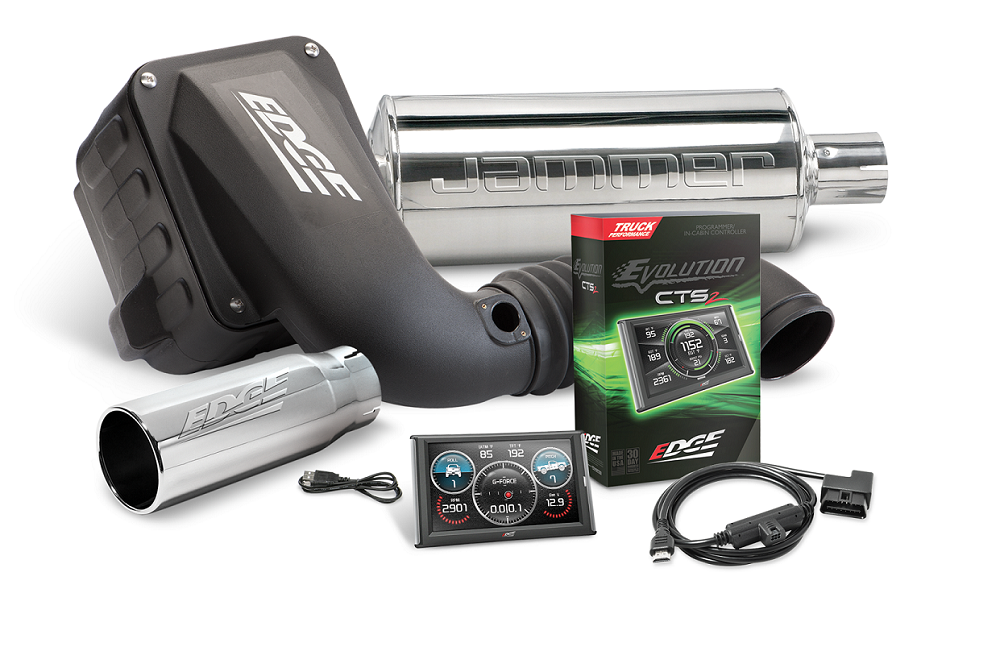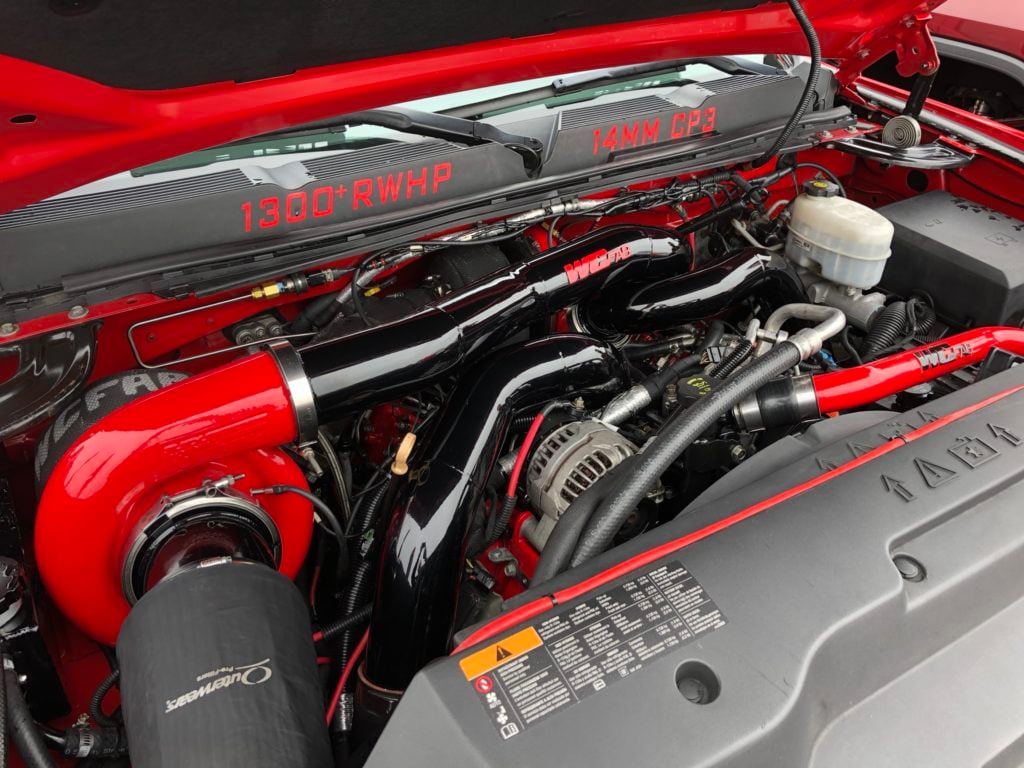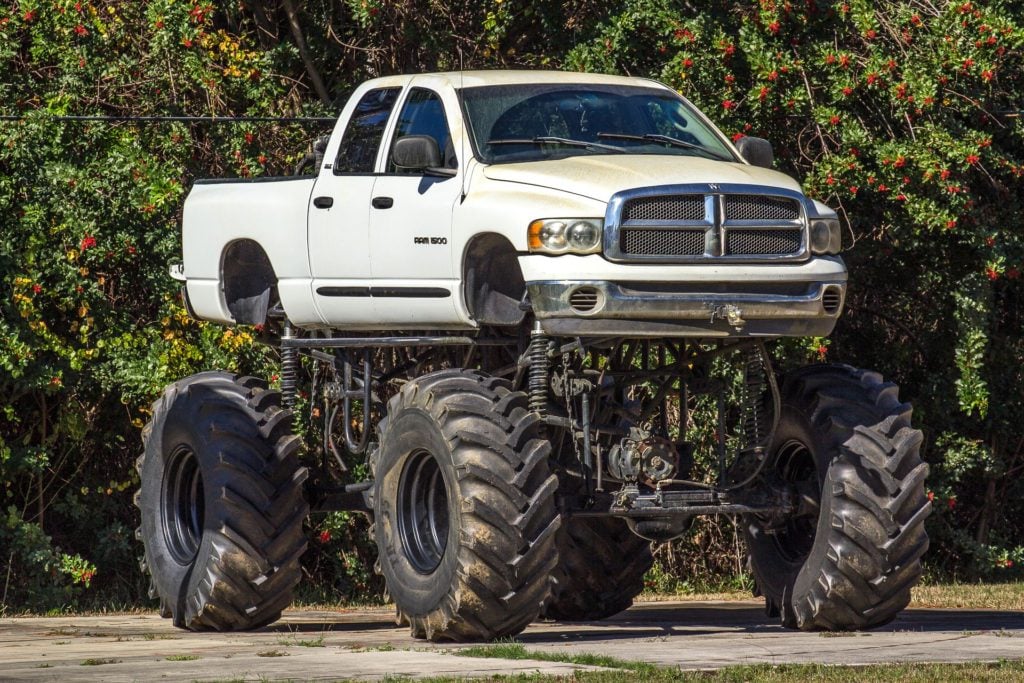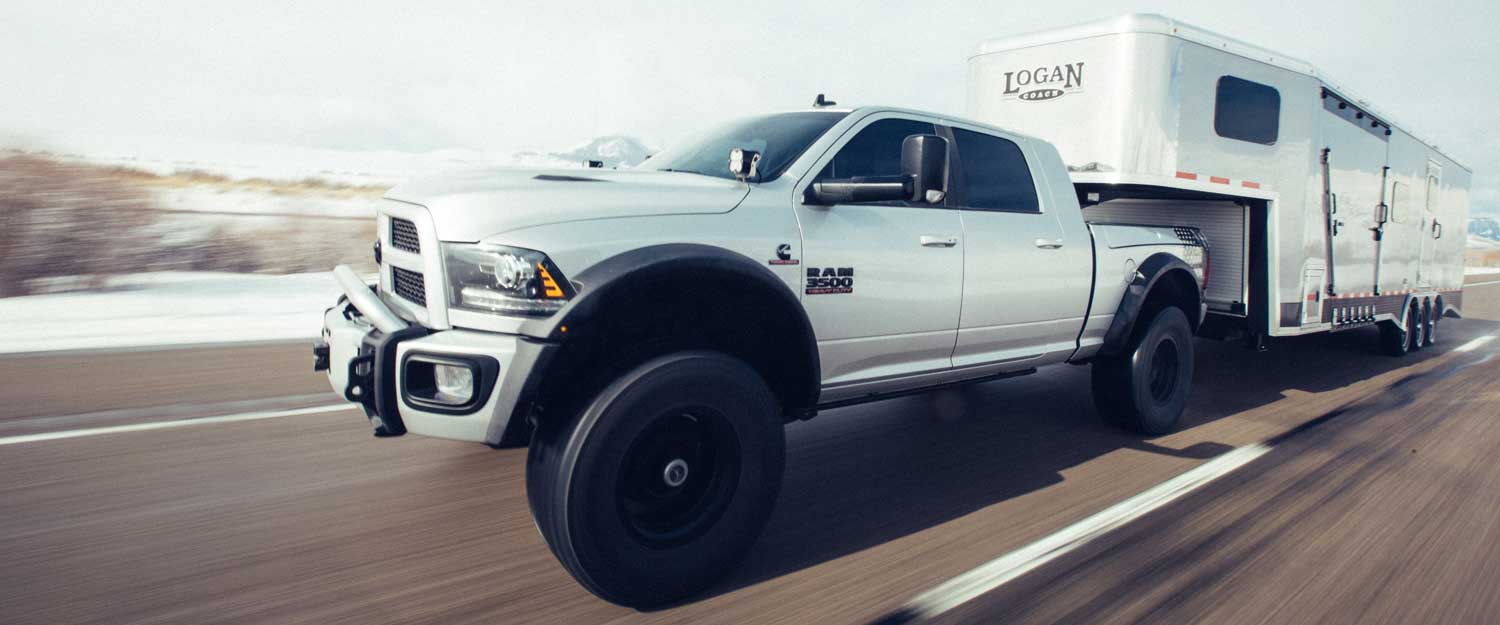Work, Play, or Get Out of the Way
Diesels pickups are popular for many reasons, but I like them because they are not a single-purpose tool. Here’s what I mean: If you want to go fast, you could go out and buy a Corvette, and it would get the job done very nicely. But, if you have more than one passenger or need to haul more than a couple bags of groceries, you have no choice but to leave the ‘Vette in the garage and drive something a little more practical. A Corvette is a go-fast machine but is good for very little else, or what I consider a single-purpose tool. If you have a bigger family and like to go camping, an SUV might seem like a good choice. It will haul the kids around in comfort, but when it comes to the longer trips, storage space will be limited, and if you need to haul a trailer, most sport utilities have a limited towing capacity. Many Americans find themselves in the predicament of what type of vehicle to buy, and for some, the solution is clear. You can do so many different things with a diesel pickup, from working on the farm, to drag racing, sled pulling, off-roading, and even just daily driving. But how far can you push the envelope when it comes to modifying? Is there such thing as one truck that will do everything, or is it better to have one truck for each task? Well buckle up, because we’re about to find out…
The Basic Mods

Right out of the gate, most guys need to add a bit of spice to their life, since stock is no bueno. Even with 900+ pounds of torque available from brand-new diesels, there is always room for improvement. I always recommend starting with the “first three” upgrades for a stock daily driver: a cold air intake, free flowing exhaust, and a performance tune. Depending on which model of truck you are starting with and the combination of parts, the first three can easily add an additional 175hp over stock, make your truck more fuel efficient, and of course, sound better all at the same time. While an intake, exhaust, and tune are a great start and would make a great daily driver, its kind of vanilla, and not that exciting. That’s why many builders modify their trucks to the extreme with one specific purpose and use in mind.
Race/Competition
If a truck that hauls ass down the quarter mile is your only goal, then you’ll have to build your truck very differently than you would a daily driver, as those are two polar-opposite ends of the spectrum. The two key factors to building a successful drag truck are lower weight and maximum horsepower, and a daily-driver style of truck will struggle to be competitive here.
When it comes to turbocharging a drag setup, large is the only way to go. Single, compound, or triple chargers can be used on the drag strip, but the dimensions of each turbo will be much larger than stock, and in certain cases of a large single, up to 105mm. But remember, if you tailor your build to all out horsepower, you can forget about towing a trailer or using the truck for any utility purposes. Your injectors will need to be very large and low speed drivability will be non-existent. In order to make the truck stick to the track, the suspension will need a lowered ride height, softer spring rates, and a Cal-Trac style traction bar, or even a four link and coilover setup, all in the name of lower 60’ times and traction. Most of the time, all the creature comforts like A/C, heat, insulation, stereos, and power seats, and a bed floor are all 86’d in favor of lighter weight. The best tires for racing will be slicks and most aren’t DOT approved, and even though a drag radial is technically legal, the tread life is non-existent and certainly can’t be driven in the rain. See what I mean about a single purpose tool?

Off Road Monster
There’s a certain group of people who love to spend time off the pavement, and they wouldn’t be caught dead at the mall with their truck, so they build it as if it will live entirely on the dirt. Depending on which type of terrain you live near, you could have a mud truck that’s lifted 14+ inches and rides on 54” Super Swampers, or if you live out west in the rocks, you might have a super flexy rig with a bobbed bed, a roll cage, narrowed front hood and fenders, 5.38 gears, spools front and rear, massive coil-over shocks, and a whole host of other modifications to allow for maximum articulation and traction at slow speed. However cool and capable, the nature of an extreme off-road build usually takes away a lot of creature comforts, on-highway manners, towing capability, and everything else that makes a heavy-duty truck what it is. An off-road rig can be a single purpose tool.
Jack of All Trades
By now you can see the problem with making a single purpose tool is it will be almost useless in any other environment from which it was intended to live. A drag truck is a ton of fun, but it can’t tow a trailer, and it would be incredibly uncomfortable to drive even a short distance. A mud truck would be sketchy at best at highway speeds, and a rock crawler would be even worse. But what if said you could have your cake and eat it too? It will take some careful planning and an intelligent selection of parts, but it is certainly possible to build a truck that you can drive every day, is capable off road, will tow a heavy trailer, lay down a pretty respectable power number on the dyno, and embarrass a sports car or two on the quarter mile. Let’s break the build down by category and see what it takes to build a swiss army knife truck.
Engine
Power wise, it will be smart to stick with external bolt-ons and have a power goal which is within the safety margin of your stock pistons and rods, which depending on the engine family is in the ballpark of 650hp. Along those same lines, you’ll want to make smart power upgrades that also increase efficiency and reduce heat. This will give you better fuel mileage, lower EGT’s, and ultimately a longer service life of your powerplant. One great way to do both is install a compound over stock turbo kit which will add plenty of power without sacrificing any of the spool up or turbine braking provided by the factory VGT charger. A turbo setup like the Aurora Plus 5000 from ATS would be perfect for towing at max GVWR with cooler EGTs, daily driving, mud running, and yet it can still flow enough air to make around 6-800hp if you have the supporting fuel modifications. The great low RPM throttle response would be ideal in off-road situations, and the massive amounts of torque will help turn larger tires through the mud or over the rocks. And the best part is, it can be installed without affecting any of your emissions equipment which means it’ll still be street legal.

Once you have the twins up and running, you’re going to be pushing a lot more pressure and volume of air through the stock intercooler, and it won’t be as effective at pulling heat away from the pressurized air as it was at the stock airflow level. A high-performance replacement intercooler is a great way to bring balance to the airflow equation, as its thicker and less restrictive core will allow more airflow volume and can extract more heat from the intake charge. This means cooler and denser air, more horsepower and better fuel mileage. Finally, some custom tuning can tie the whole power package together. Calibrated Power is a great place to start as they tune most common-rail diesels. You can have a program which will work for your modifications, and even switch power levels on the fly to suit your conditions at any moment, whether it be towing, racing, or commuting.
Suspension
How tall you lift your truck largely depends on what size tire you plan on running. While a larger tire is generally better off-road, a true multi-purpose truck needs to have great street manners as well, which puts you in the range of a 35 to 37-inch tall tire, likely with a mud-terrain style tread. Tires in this range are available with an “E” or better load rating which means it will handle a heavy payload or trailer with ease. To fit a 35 or 37 on an HD pickup, you don’t need a ton of lift height, especially if you drive a Ram or Ford. A Carli Backcountry 4.5” Suspension System will of course give you the height needed to clear the 37’s, but it’s so much more than just a lift. The multi-rate front coil springs will allow for a smoother ride than factory both on and off road, and will allow the suspension to handle better as well. Out back, you can choose to upgrade to a full replacement leaf spring pack which will help smooth the ride even more, with only a slight sacrifice to payload capacity. The included Fox 2.0 shocks keep the handling under control in the rough stuff, and when it’s all said and done, you’ll have 11.5” of travel up front and 12” out back.
A few last-minutes addition to the suspension system would be needed to make a true multi-purpose vehicle. An airbag assist kit will make up for the payload difference of the slightly softer leaf springs. PacBrake offers a nice solution which includes the bags and brackets to physically mount the air springs between the rear axle and frame, plus you can upgrade to an on-board air compressor and tank which will speed up the process of inflating and deflating the bags. When you hook up to a trailer or put some weight in the bed, it’s as simple as flipping a switch to inflate the bags to the desired pressure to level out the load. Then when you unload, you can flip the switch again, let out all the air, and restore the ride quality of your new springs.
Drivetrain
We’re well on our way to creating the ultimate do-anything diesel, and there are just a few things left which will complete the package. The taller tires will in effect create less leverage for the engine to move the truck, and the way to correct that is to change the gearing in the axles. Most trucks come with a ratio of 3.42, 3.55, or 3.73. Any one of those will work great with a stock size tire, but as the rubber gets bigger, so should the number that describes your gears. Stepping up to a 4.30 is a great solution for the 35 to 37-inch tire and will put the engine back into its ideal RPM range, which means less work on the engine, lower EGT, better fuel mileage, and a better driving experience. Nitro Gear offers a complete conversion kit with all the required bearings, seals, and shims needed to complete the swap to a 4.30. If you are dead set on running a taller tire like a 42, that’s OK, but you’ll likely want a 4.56 ratio to keep thing in balance. Also, if you’re going through the hassle of re-gearing, then a true multipurpose rig could use some help in the traction department as well, and an ARB Air Locker is just the ticket. Flip a switch and both rear wheels will be locked together, allowing you to climb up and over just about any obstacle on the trail. Then, when it’s time to hit the highway and cruise home, you can disengage the locker for smooth street driving. Plus, if you’ve already installed an air compressor and tank for your airbags, then you can save some costs there and just tap into the existing system to operate the air locker.
Finally, your automatic transmission will need some love with the increased horsepower and load from the bigger tires and twin turbos. You don’t need to go nuts with billet shafts and crazy line pressure for a sub 700hp pickup, but a decent build with better clutches and a billet triple disc converter can do wonders when it comes to putting lots of torque down to the ground, especially with a heavy trailer in tow. Just don’t forget about keeping the trans temps cool; towing will warm up any transmission in a hurry regardless of how “built” it is, and even the best transmissions don’t like heat, so a larger transmission fluid cooler is cheap insurance to help any transmission live a long life.
Are You Convinced Yet?
If there is one thing you should take away from this, it’s to be realistic about your goals. I don’t care what your cousins’ best friend from high school says, there’s no such thing as a 7 second ¼ mile truck that can tow 26,000 pounds, be driven every day, and will crawl through the trails of Moab. While everybody would love to have a thousand horsepower truck, few people actually understand what it takes to build one and harness all that power. But, with a little planning ahead and smart parts selection, you can have a stylish truck that’s capable both on and off road, puts down 6-700hp, rides on a 37-inch tall tire, and can still haul a big ol’ gooseneck loaded down with cargo, and will still be able to have some fun at the drag strip or the sled pull at the county fair. This is the reason why so many gearheads are attracted to a diesel build in the first place; it’s like a Leatherman in your pocket. A true multi-purpose tool.


I have a 1999 Jeep Wrangler SE with a 2.5 4cyl with 5 spd transmission and a Currie reared with a 9in Ford 3rd member positrac 31 spl with 4.86 gears.
I’d like to put a 3.0 turbo diesel in it would you be able to do a Change like this?
Feel free to give us a call or send an e-mail to cs@dieselpowerproducts.com and we can discuss your project.
Good article ! Very direct and realistic.
I have a 1985 1/2 ton Chevrolet Silverado Diesel SWB that came with the Detroit 6.2. The 6.2 cracked her heads about 15 years ago, whole motor is gone. I ran a gas V-8 in it for years, now I am thinking of installing a low mileage under 40,000 Cummins 5.9 out of a Motor coach, it has a VE pump and a 4 spd. Allison auto behind it, and the Chevrolet truck came with a 3.08 rear end. I want to build a dependable daily driver with a little more than stock performance ,and decent MPG. but, I want it to look like it could have came from the factory like this. I want it to remain a automatic transmission vehicle. I will be running stock tire and rims and stock chassis and suspension. I will be restoring the truck back to factory interior trim and paint scheme and trim.. Any advice would be greatly appreciated and considered. And I hope to post the build on YouTube. Thanks.
Hi there and thanks for the question. The good news is you’ve chosen a good candidate for having a truck to achieve great fuel economy and even be able to squeeze significantly more power than stock, especially more than the original 6.2 would have had, and to find an engine with only 40k miles on it….heck of a find. The conversion is definitely doable and depending on whether you plan to use the original transmission or use the one from the motorhome (or other) will obviously dictate a few things. Fortunately, there are kits available from the engine mounts, to transmission adapter plates, and so forth. The below kit from Diesel Conversion Specialists will get you started on physically mounting everything in place. From there, all of the nitty gritty things like radiator mounting and plumbing, fuel system, etc. will start to fall into place.
https://www.dieselconversion.com/getting-started-kit-1978-1988-chevy-gmc-solid-axle-automatic-transmission.html?options=cart